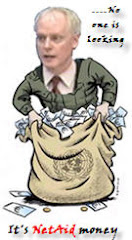CLICK HERE TO VIEW THIS ON THEECONOMIST
MANCUR OLSON, an American economist, talked about $100 bills lying on the sidewalk to express the idea of easy gains. The amount of food that is wasted represents a gigantic stack of $100 bills. Both in rich countries and poor, a staggering 30-50% of all food produced rots away uneaten. According to Josef Schmidhuber of the FAO, in Africa the post-harvest waste largely explains why many smallholders are net purchasers of food even though they grow enough for their families to eat.
In poor countries most food is wasted on or near the farm. Rats, mice and locusts eat the crops in the field or in storage. Milk and vegetables spoil in transit. These might be considered losses rather than waste. Kanayo Nwanze, the head of the International Fund for Agricultural Development, reckons that such losses could be reduced by half. That would be the equivalent of a rise in output of 15-25%, which would go a long way to providing the extra food needed by 2050.
Unlike in rich countries, much of the waste in poor ones is a matter of money, not behaviour. Grain is often heaped on the ground and covered with a sheet: no wonder the rats get at it. Losses could be reduced by building new silos and better roads and providing more refrigeration, but those things are expensive. The African Development Bank is financing a seven-year programme to reduce waste by 3% a year. Given the scale of the losses, says Divine Njie of the FAO, who worked on the scheme, “we were surprised at how modest the targets were.” But 3% a year adds up to a 20% reduction in waste over seven years, a good start.
There is likely to be more of this sort of investment in future. To meet demand in the emerging megacities, more processed food is being sold in supermarkets and less raw food in markets. Nutritionists worry about the resulting loss of quality, but there are big gains in quantity. Food processors and retailers use modern silos, proper trucks and refrigeration—the very things the rural poor lack.
Rich countries waste about the same amount of food as poor ones, up to half of what is produced, but in quite different ways. Studies in America and Britain find that a quarter of food from shops goes straight into the rubbish bin or is thrown away by shops and restaurants. Top of the list come salads, about half of which are chucked away. A third of all bread, a quarter of fruit and a fifth of vegetables—all are thrown out uneaten. In America this amounted to 43m tonnes of food in 1997; in Britain to 4m tonnes in 2006.
If all rich countries waste food at the same rate as Britain and America, very roughly 100kg per person per year, the total waste adds up to 100m tonnes of food a year, equivalent to one-third of the entire world’s supply of meat—an astonishing quantity. If Western waste could be halved and the food distributed to those who need it, the problem of feeding 9 billion people would vanish.
But it can’t. Western spoilage is a result of personal habit and law. Education or exhortation might make a difference, but the extent of waste is partly a reflection of prices: food is cheap enough for consumers not to worry about chucking it out, and prices seem unlikely to rise by enough to change that attitude
















































No comments:
Post a Comment